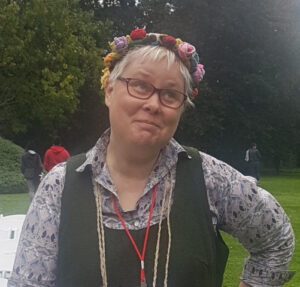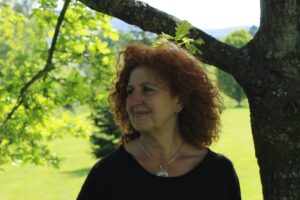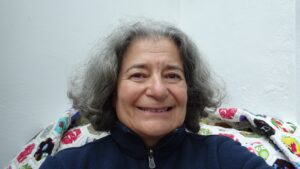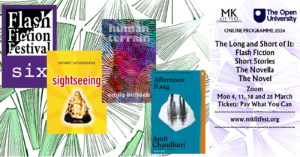This past Monday, 5 March 2024, acclaimed flash fiction writer, Electra Rhodes kicked off the series events we are putting on for MK Lit Fest. Electra was in conversation with OU PhD student Jupiter Jones, herself a prize-winning author of flashes – complete stories told in just a few hundred words.
PhD student, Grace Kempster, offers here a potted version of the event for those of you who couldn’t make it.
Just like a piece of flash, the session was compressed with wisdom about writing and enjoying this difficult but rewarding form. Electra’s ‘In Momma’s Shoes’ packed such a punch in three short paragraphs. Who knew that everything about child neglect and poverty could be contained in a 300 word capsule of flash – travelling at speed to the pinpoint precision (quite literally) of the end.
Electra gave us 11 quickfire features of the short, compressed narrative that is flash:
- Under 1,000 words
- Distinctive form – hermit crabs, for instance, are flashes made of different forms such as menus or surveys
- The title really works, doing the heavy lifting
- Compression and intensity
- Language that is tight, bright and right
- Like the after-image of a camera/phone flash
- Use of image, metaphor, archetypal trope, fable and fairy tale to draw in extra layers of meaning
- An ending that lands – if a story is like sewing, this is the thread pulled taut with a twang
- Experimental
- Plot involves a shift of some kind
- Lots of stuff happens off the page
Like a balloon, you feel your way to the right length of the thing, containing just the right amount of air. Electra advises ‘Start late and get out as early as you can!’ Look for a chewy satisfying landing . It is the briefest invitation into a world, requiring intimacy to ‘read’ the space between the lines and off the page, to let go and trust the reader will get it.
Flash is thriving, many anthologies to read full of wonderful examples of form, style and length – and infiltrating other forms with its fracture, compression and oomph!
A final tip that stays with me: read it out loud, record it, play it back in your own and different voices, then you will see what lands, the final form. When you write something and someone else gets it, it is just the best feeling.
As Electra and Jupiter both say, read it, jump in, try it, be experimental … What’s the best that can happen?
Grace Kempster’s full-time PhD explores the representation of cloth and stitch in the mid-Victorian novel (1845-75). She is examining 6 key texts by Thackeray, Dickens, Oliphant, Yonge , Eliot and Trollope to explore the tropes and consider a new paradigm of textile fluency affecting the novel. Her supervisors are Professor Delia Da Sousa Correa and Professor Nicola Watson.
Clips from the event will be included in the OU’s updated Advanced Creative Writing course (A363) launching in October. The series continues with events on the short story and novella, at 7.30pm on Monday 11 and 18 March, and one on the novel at 5pm on Monday 25 March. The series will conclude with an in-person panel event at Milton Keynes Central Library at 11am on Saturday 6 April.




